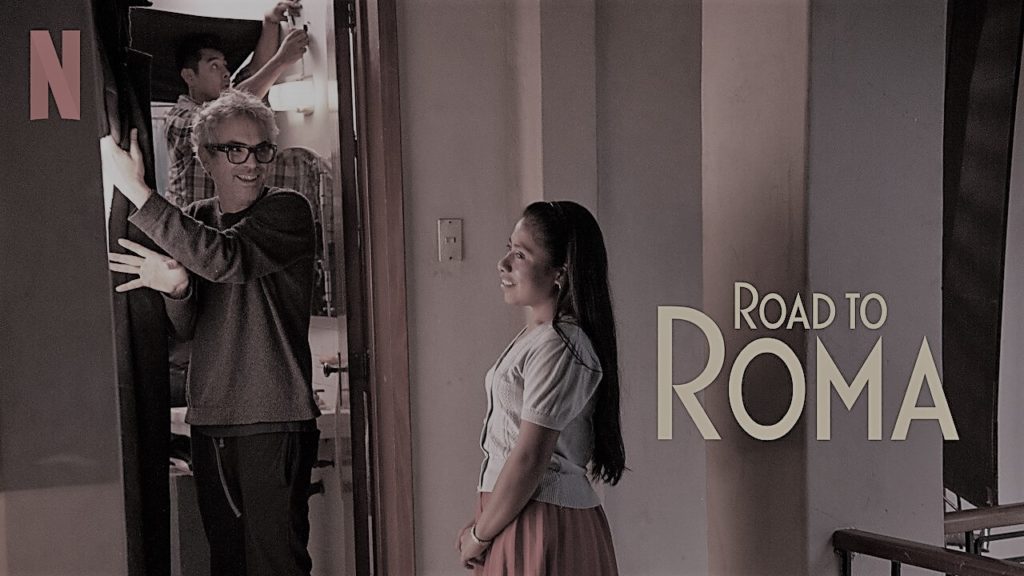Road to Roma–Courtesy of Netflix
Road to Roma (2020) is a documentary film about the making of Roma (2018). The Director–Alfonso Cuarón tells about his childhood memory that brings him to an idea to create ‘Roma’–the Best Foreign Language Film in Academy Award 2019. Roma is about a domestic worker, named Cleo, who helps a woman raise her four children in Mexico City.
In Road to Roma, Alfonso Cuarón said that Roma is based on his childhood memory in the 1970s in Mexico City. He was impressed by his nanny, named Libo, who often told about the experience of hunger or freezing that is surprised to a middle-class boy like him. Libo then inspires Cuarón to create the protagonist of Roma film (Cleo).
Cuarón wants to animate his childhood memory on his film–Roma. Like the title Roma is taken from the name of his childhood neighborhood, he uses the same properties, costumes, environment, and buildings from the period of his upbringing. He and his crew search, use or rebuild the same materials, from tile floor, sofa, shelf, bed, dress, house, car, to the buildings in the shopping area on Roma.
He chooses Yalitza Aparicio, a Mexican girl to play role as Cleo. Although she has never studied acting formally, she has many experiences related to Cleo’s character. She has a degree in pre-school education and works as a teacher. She is also mastering Mixtec language. The director does not want every character on Roma, including Cleo, to play a role but to be their own selves.
To help the natural acting of characters, Alfonso Cuarón did not give a script to the actress and actor, so they did not know what would happen in the next scene. The construction of exact details of Cuarón’s memory and the flowing acting of characters affect the dynamic emotion of this film. It can transmit the emotion of characters to the audience, such as the mixed feeling of Cleo when she sees the broken family or when she faces an unplanned pregnancy.
The moving of camera on Roma also implies the natural everyday life, which prioritizes the context of events. Even the protagonist of Roma is only a character who flows within this context. The monochrome color tone in this film also helps the audience to visit Cuarón’s childhood memory in the 1970s. Although it uses black-white color, this film is in HD quality. It combines the old nuance with high technology to transmit the context to the audience.
Alfonso Cuarón uses social research to animate the society scene in Roma. For example, to make a scene of Cleo in front of the Cinema, he involves various demographic analysis about the ratio of social classes in the 1970s at Mexico City, the ratio between men and women in each social class, what their ethnicity, what their jobs and what their costumes are like. He can manage to re-present the society of Mexico City at that time. Another example is a scene of the 1971 student demonstration in Mexico City. It’s based on the journalism photo in mass media which portrays the paramilitary group called Los Halcones chased and hit the student demonstrators.
Road to Roma (2020) is an important film to be watched after you watch Roma (2018) because it reveals how Roma (2018) became successful to present various social issues, from the gender, race, social hierarchy issues to political massacre from the perspective of ‘ordinary people’. The narrative of ‘ordinary people’ is very touching but is often forgotten because of the repression of dominant master narrative. Both ‘Road to Roma’ and ‘Roma’ are successful to raise the personal/ ordinary people’s/survivor’s narrative history to the surface.


